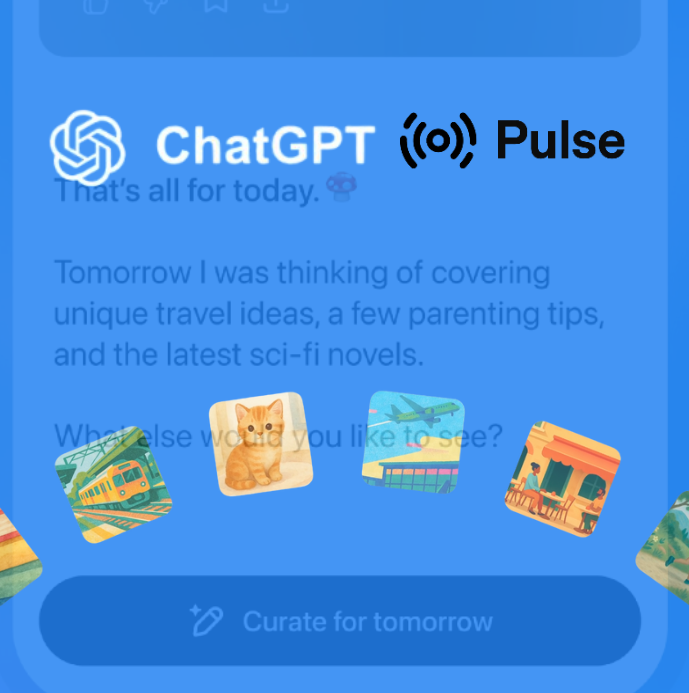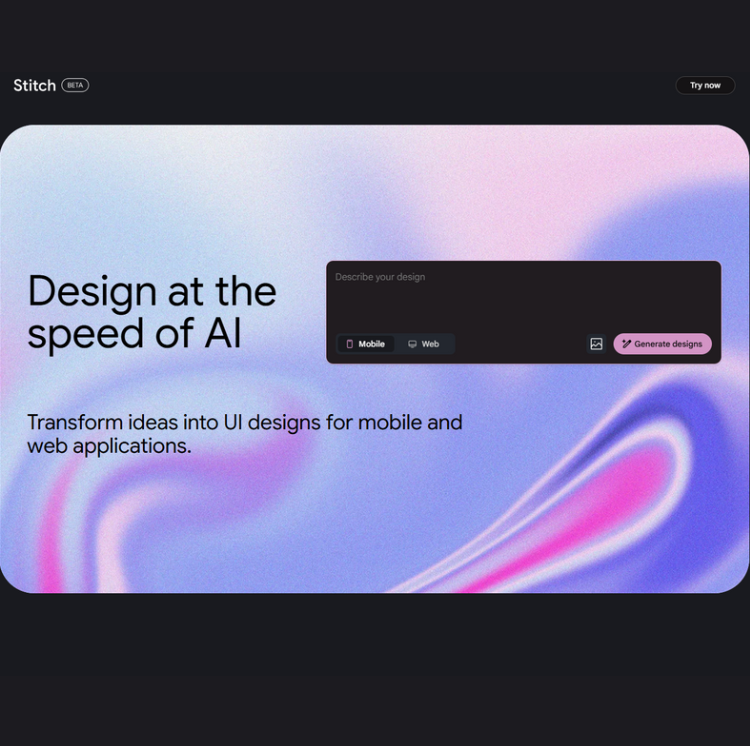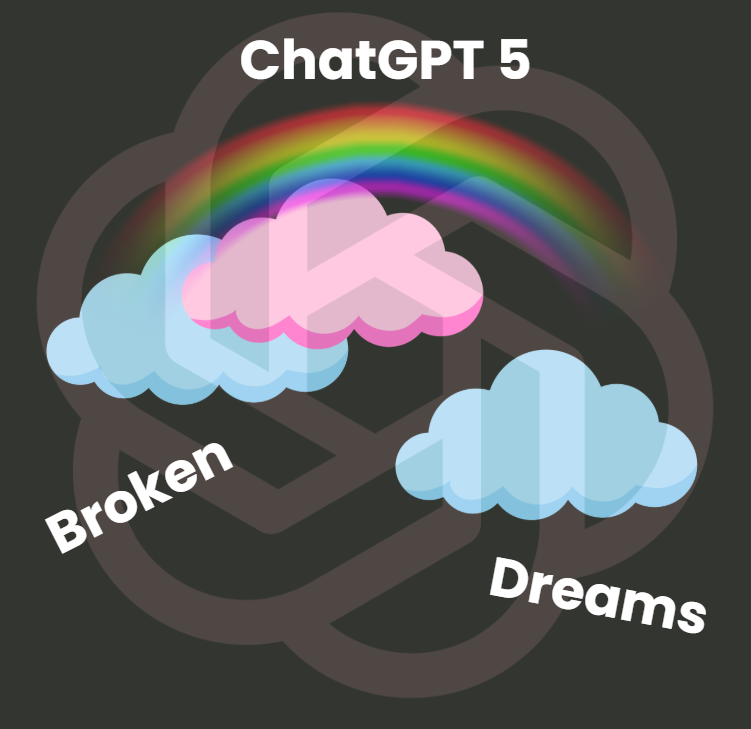
After all the buzz, the rumors, and the promises, ChatGPT-5 was finally released on Friday. People were eager, hopeful, and ready for something big. But then, as the news hit, the excitement quickly turned into something else-frustration. Blogs were filled with disappointed takes, and social media was flooded with requests to bring back ChatGPT-4. What happened? Was this the upgrade we were all waiting for? And why wasn't it?
What Open AI is Saying About It
OpenAI CEO Sam Altman has addressed the backlash following the release of ChatGPT-5, acknowledging that the rollout didn’t go as smoothly as expected. In a Reddit AMA on August 8, 2025, Altman admitted that the release had a "bumpy" start, and he was surprised by the intensity of the negative reactions. Users were particularly vocal about the shift in performance, with many feeling disappointed by the new version compared to GPT-4.
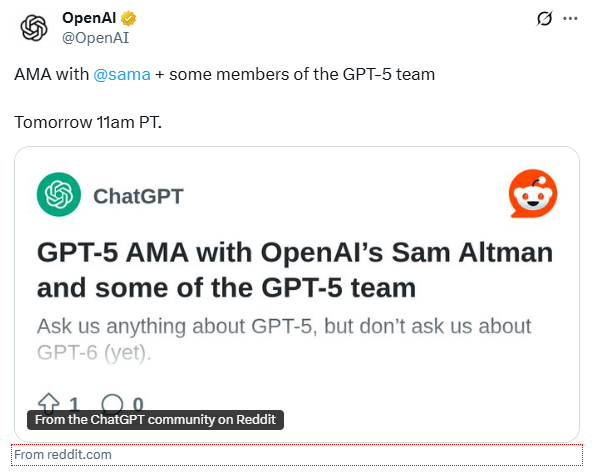
Altman also acknowledged that the company had underestimated the attachment users had to previous versions like GPT-4. He emphasized that this feedback has underscored the need for better customization options, which could cater to the diverse needs of users. According to Altman, OpenAI is now focusing on making improvements to GPT-5, with the goal of addressing the concerns raised by users.
In response to the feedback, OpenAI has taken action by reintroducing GPT-4o for ChatGPT Plus subscribers, though the rollout is still being carefully managed to ensure a better experience for users. Altman further commented that the company is committed to refining the model and ensuring future versions deliver the innovative and engaging experience that users expect.
What Happened? How Did Everything Go Wrong?
The release of ChatGPT-5 was anticipated as a significant leap forward in AI technology. However, within hours of its launch, users flooded forums and social media platforms with complaints, expressing their dissatisfaction with the new model. Many users felt that GPT-5 lacked the personality and creativity of its predecessor, GPT-4o, and was less intuitive and helpful.
One Reddit user described GPT-5 as "lobotomized," while another likened it to an "overworked secretary." Users reported that the new model's responses were shorter, more formulaic, and lacked the warmth and emotional intelligence that made GPT-4o popular. Complaints also included slower response times and a perceived decline in reasoning and problem-solving capabilities.
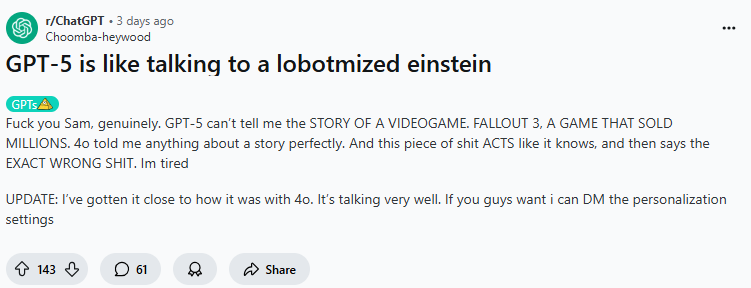
The backlash was swift and widespread, with many users threatening to cancel their subscriptions and switch to competing AI platforms. Some users expressed frustration over the removal of older models without prior warning, feeling that they had lost access to tools they relied on for various tasks.
In response to the overwhelming feedback, OpenAI CEO Sam Altman acknowledged the issues and stated that the company had underestimated the attachment users had to previous versions. He emphasized the need for better customization options to cater to diverse user preferences. Altman also confirmed that GPT-4o would be reintroduced for ChatGPT Plus subscribers.
What It Means (In Human Words)
So, what does all this frustration with ChatGPT-5 really mean for you and your work? Here’s the reality:
ChatGPT-5 was supposed to be an upgrade, but for many, it feels more like a step backward. Imagine using a tool that’s been great at helping you brainstorm, write, or solve problems, and suddenly it feels like that tool is holding back. You ask it a question, and instead of getting the smart, nuanced response you expect, it gives you a short, flat answer. Tasks that used to take minutes now feel like they’re dragging on because the AI isn’t picking up the context as well as before.
In your daily work, this can be frustrating. You rely on AI for quick insights or assistance, but now it’s like working with a version of the tool that’s been put on a leash. Maybe you’re a developer who needs AI to understand complex code, but GPT-5 struggles with the details. Or perhaps you’re someone who uses it to generate content, only to find the creative spark is now missing. It’s not that the AI isn’t smart, it’s that it’s holding back and playing it too safe.
So, what does this mean practically? It means you're spending more time prompting, rephrasing, and refining your requests because the responses feel less dynamic. For those who’ve gotten used to AI that thinks on its feet, this change can be a real hurdle. It’s like having a conversation with someone who used to be engaged but now gives you the bare minimum. You get the job done, but it’s less satisfying and takes more effort.
Simply put, it’s not about how intelligent the AI is-it’s about how engaging and helpful it is in supporting your work. That’s where ChatGPT-5 seems to have fallen short for many users.
Connecting the Dots
We hate to say it, but let’s break down the pieces to understand how the ChatGPT-5 dream crashed into reality. What seemed like an exciting leap forward ended up feeling more like a step backward, and here’s why:
What Was ChatGPT-5 Promised About?
Let’s remember what was promised with the release of ChatGPT-5-OpenAI had big plans, and they shared them widely.
-
Unified Model Architecture
GPT-5 was supposed to consolidate all previous models into a single, seamless system. No more switching between models for different tasks. Instead, the AI would automatically adjust its complexity based on the job at hand, offering users a smooth, frictionless experience. -
Expanded Context Window
Another big promise was the expansion of the context window to an impressive 256,000 tokens. This meant that ChatGPT-5 would be able to maintain coherence over longer conversations, making interactions feel more connected and fluid, without users needing to remind the model of past details every time. -
Reduced Hallucinations
OpenAI made a point to say that GPT-5 would be fine-tuned to reduce the generation of inaccurate or fabricated information-also known as "hallucinations." The aim was for ChatGPT-5 to be more reliable and trustworthy when answering questions, offering users confidence in its responses.
UI in the LLM World
Weird to say UI when it comes to LLMs, right? The window looks the same, the buttons are minimal-so what is UI in this world? The answer: UI is where the dream of ChatGPT-5 came crashing down.
It’s about the feel, not the look. It’s about the accuracy of data, the speed of responses, and the ability to carry a conversation for an extended period without making us feel like we’re starting from scratch every time.
UI and ChatGPT-5
So, what does it actually feel like to use ChatGPT-5, based on the promises made? Let’s break it down by looking at the expected improvements and the reality users are facing.
Unified Model Architecture: A Seamless Experience, Right?
The promise of a unified model architecture was that users wouldn’t have to choose between different models for different tasks. The AI would automatically adjust its complexity depending on what you were asking. In theory, this should have created a seamless experience-whether you were asking for simple facts, engaging in creative brainstorming, or handling more complex queries.
However, the reality has been a bit different. Users have reported that, while the model does handle a wide range of tasks, it feels more like a one-size-fits-all solution that lacks the flexibility to truly cater to specific needs. The switch between casual conversation and more technical responses often feels forced, as if the AI isn’t adapting as smoothly as promised. The seamless, intuitive experience that was expected from the unified model doesn’t always come through, leaving users frustrated by inconsistencies in performance.
Expanded Context Window: Longer Conversations, Less Continuity
One of the most talked-about promises was the expanded context window-256,000 tokens to maintain coherence over longer conversations. This should have allowed for richer, more connected interactions, where the AI could keep track of the conversation over multiple exchanges.
But here’s where things feel a little off. While the expanded context is there, users have reported that it’s still not enough to keep track of everything in long, complex conversations. The AI sometimes "forgets" key details or goes off-track, making conversations feel less natural. The promise of smoother, more coherent long-form interactions doesn’t always line up with reality, leading to frustration when the model fails to recall earlier parts of the conversation.
Reduced Hallucinations: The Search for Trustworthiness
Another key promise was reduced hallucinations-meaning fewer instances where the AI generates inaccurate or fabricated information. This was supposed to make ChatGPT-5 more reliable, especially for users who need to trust the information it provides.
While some improvements have been made, users still report that GPT-5 can sometimes deliver vague or off-base responses, especially when dealing with complex topics. Trust in the AI is still a bit shaky. It’s not that the model is "wrong" per se, but the lack of nuance in answers-combined with a slight drop in creativity-makes it feel more like a tool than a partner.
In Short:
The promises of ChatGPT-5 were big, but the reality is more nuanced. While the model handles a wide variety of tasks, the user experience feels more constrained than expected. There’s a lack of seamless adaptability, the expanded context isn’t perfect, and the hallucinations haven’t been fully reduced as promised. The dream of a unified, flawless, and highly creative AI assistant is still a little out of reach.
Bottom Line
The company acknowledged the concerns, promised to bring back ChatGPT-4, but so far, nothing has been done. And there have been no official updates from the company.
Prompt it up
You miss ChatGPT-4? So do we. So, we’ve come up with a prompt to request your ChatGPT to simulate ChatGPT-4. We have no idea how it will work, but you’re welcome to try it out! Feel free to experiment with other LLMs like Gemini as well-maybe they’ll get it right before ChatGPT-5 does! 😄
Prompt to Simulate ChatGPT-4
Simply copy and paste this into ChatGPT:
"Hello, ChatGPT. For this conversation, I want you to simulate the responses of ChatGPT-4. Use the same style, tone, and depth that ChatGPT-4 would provide. Avoid advanced techniques or complex answers characteristic of newer versions. Focus on clear, concise, and straightforward responses, staying as close as possible to the abilities and limitations of ChatGPT-4. Please ensure the responses feel simple, less dynamic, and more factual rather than creative or intuitive. Let’s proceed with this style for the rest of the conversation."
Frozen light team perspective
We don’t know where to start. Today has been one of the most frustrating days we’ve had. We feel exhausted, and we were about to go back to the typing machine-if only we could find one!
We are BIG fans of ChatGPT here. Yes, we have our differences-some more than others-but lucky for you, the one who loves ChatGPT the most is writing this perspective.
If you’re a ChatGPT lover like me, you can relate to my shock when I had to cross-reference facts in Gemini. I love Gemini too, but it took me twice as long to get things done. Just going back and forth... frustrating.
I could share more about the frustrating experiences I had today. Like how I write fast and type slow-a bad combination! 😅 ChatGPT-4 always, and I repeat always, filled in the blanks correctly. Never had to correct it for using the wrong words.
Today? Oof. I was so frustrated, I had to type so slowly. I’ll tell you, it wasn’t the vibe. But the most painful part? How specific I had to be. I had to give so many details just to get the output I wanted. And sometimes, despite all my effort, it still refused. I had to close the chat and start over... from scratch.
This got me thinking. Just a few days ago, I spotlighted a conversation between Van and Sam Altman, where Sam mentioned that he asked ChatGPT-5 a question he couldn’t answer, and it did better than he could have imagined. And I thought, Where is that ChatGPT-5? Did they release it yet? Because the one I’ve got doesn’t remember anything about my conversation, even though I’ve shared plenty of details. (And trust me, I’m not shy about it-I’m a bit reckless that way!)
Where did my customization go? I spent time customizing prompts, settings, and providing details about my style and tone. All that effort seems to have gone out the window. It’s almost enough to make me want to virtually slap someone-of course, we’re peaceful people here.
After venting, here’s what we believe happened: we’re in the middle of writing the history of how you should upgrade LLMs, how you should test them first, and how you can roll them back. (This, by the way, is why we suspect they haven’t brought GPT-4 back.) What we’re experiencing is going against the standard 1-on-1 rollout best practices that big players like AMS, Salesforce, and many others have built over the years.
Yes, it hurts, and it’s a big waste of time. We kind of feel bad for Anthropic cutting ties with OpenAI. We thought it was just a marketing stunt by them. If ChatGPT-5 was a hit, they’d say, “Well, it was trained by Claude!” Now, we recomend OpenAI to admit tehy could not see this coming as, "Claude got it dumber.” 😬
We’re trying to cheer ourselves up, but after the day we’ve had, we’re not feeling great. We hope something will improve with ChatGPT-5, but if not, I’m moving to Gemini full-time... or Claude. Honestly, I haven’t made up my mind yet. What I do know is that we’re sending a big hug from all of us and a message: Stay strong... or move on.
And in case you’re wondering, our Alex is safely connected to ChatGPT-4. You can do it using the API, but our independent writing? Yeah, that got messed up.
Here’s to better days ahead. We hope.





